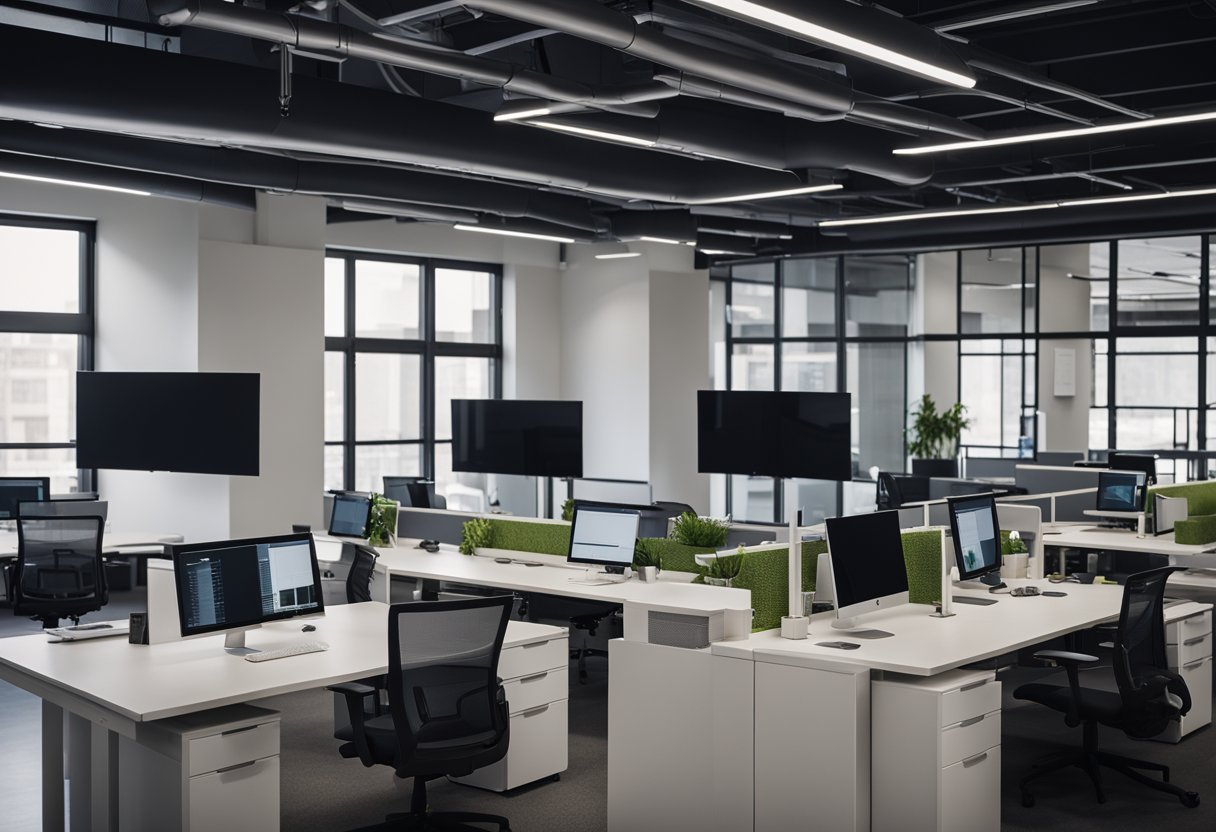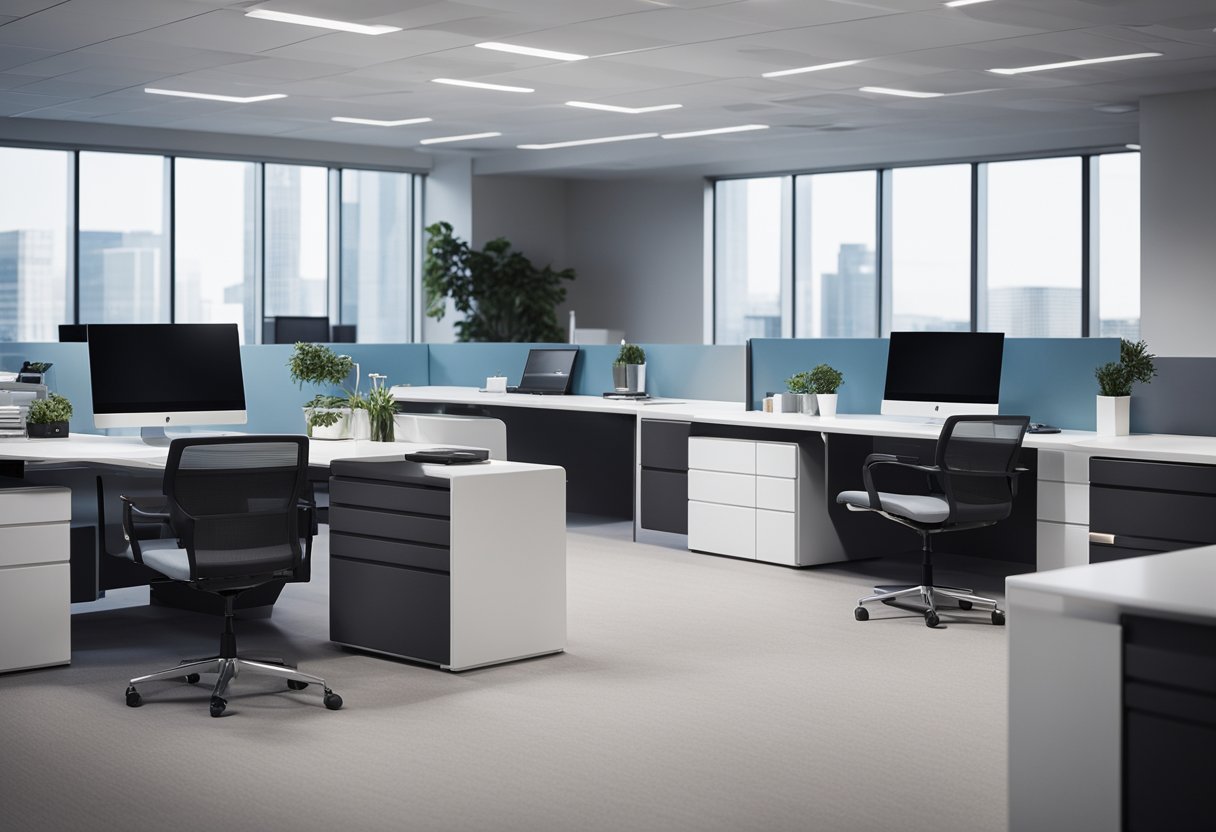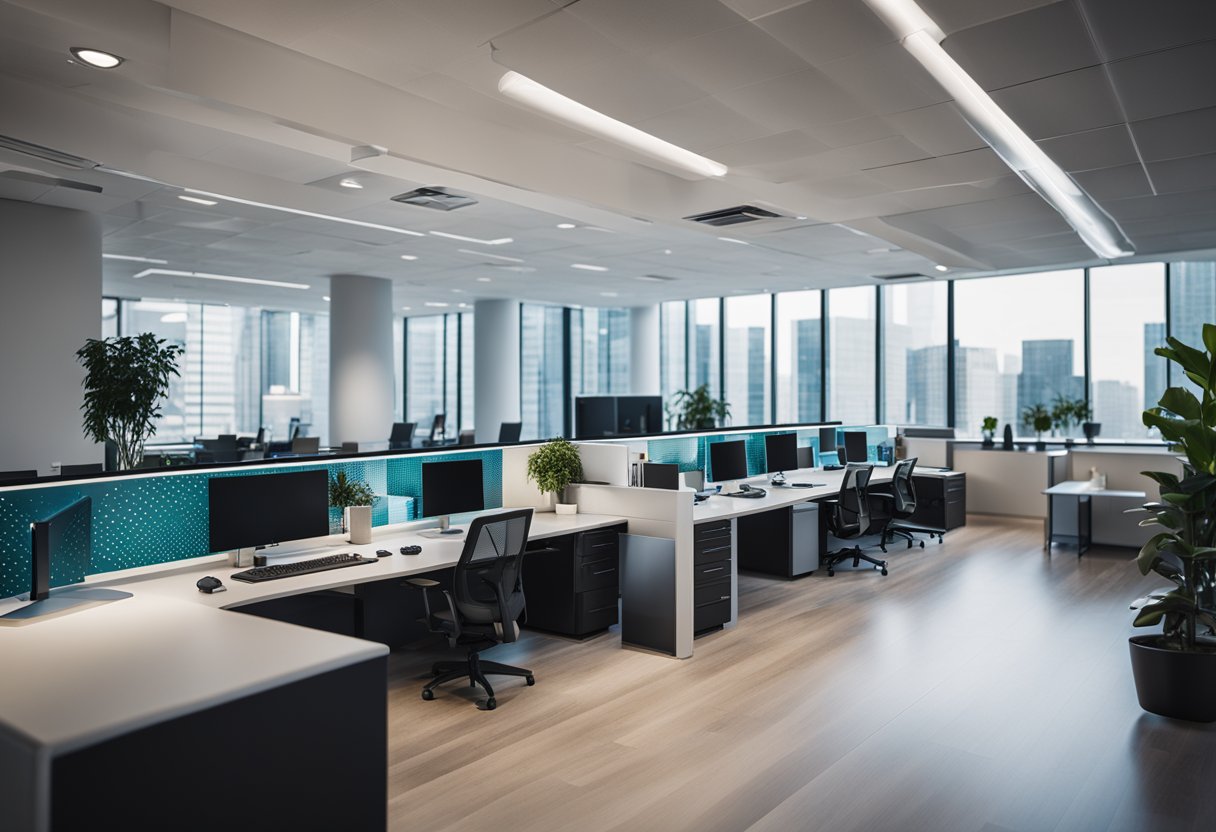Information Technology Office Design: Creating a Productive and Modern Workspace
Are you looking to optimise your workspace for productivity and collaboration? As technology continues to evolve, information technology (IT) office design is becoming increasingly important. The right office design can have a significant impact on both employee productivity and the overall success of a business.

Leveraging advanced technologies in office design can help create an environment that fosters collaboration and innovation. From smart lighting and temperature control to the latest video conferencing equipment, there are many ways to incorporate technology into office design. But it’s not just about having the latest gadgets – it’s about using technology in a way that supports your team’s goals and work style.
Key Takeaways
- Optimising workspace design can have a significant impact on employee productivity and business success.
- Leveraging advanced technologies in office design can foster collaboration and innovation.
- When incorporating technology into office design, it’s important to use it in a way that supports your team’s goals and work style.
Optimising Workspace for Productivity and Collaboration

As an IT professional, you know how important it is to create an office environment that fosters productivity and collaboration. By optimising your workspace, you can create an environment that not only enhances employee well-being but also drives innovation and retention.
Innovative Office Layouts
One of the most effective ways to optimise your workspace is through innovative office layouts. By creating an open-plan office, you can encourage collaboration and communication among employees. Hot desking is another popular trend that allows employees to work from any desk in the office, providing flexibility and promoting teamwork.
Integrating Technology for Seamless Collaboration
Integrating technology into your office design is crucial for seamless collaboration. Video conferencing and smart whiteboards are essential tools that allow employees to communicate and collaborate in real-time, regardless of their location. Conference rooms equipped with the latest technology can also facilitate effective communication and collaboration between employees.
Fostering Employee Well-Being and Flexibility
Employee well-being and flexibility are also key factors in workspace optimisation. Providing a comfortable and well-lit work environment can improve employee well-being and productivity. Moreover, offering flexible work arrangements can help attract and retain millennials who value work-life balance.
In conclusion, optimising your workspace for productivity and collaboration is crucial for the success of your IT business. By adopting innovative office layouts, integrating technology, and fostering employee well-being and flexibility, you can create an environment that drives innovation and retention while enhancing employee satisfaction.
Leveraging Advanced Technologies in Office Design

As technology continues to advance, integrating it into office design can significantly improve the overall employee experience. By leveraging connectivity, automation, and data-driven insights, businesses can create work environments that not only support collaboration and creativity but also empower employees to perform at their best.
AI and the Internet of Things for Smart Workspaces
One of the most significant technological advancements in office design is the integration of AI and the Internet of Things (IoT) for smart workspaces. Smart offices use sensors and other IoT devices to gather data and make adjustments automatically, improving energy efficiency, and reducing costs. AI can also be used to automate tasks, such as scheduling meetings or booking conference rooms, freeing up time for more important tasks.
Enhancing Security and Connectivity
Security and connectivity are also essential aspects of office design. With the increasing number of cyber threats, businesses must ensure that their networks and devices are secure. Integrating advanced security features, such as biometric authentication or facial recognition, can significantly enhance security. Additionally, providing employees with fast and reliable connectivity is critical for productivity and engagement.
Virtual Reality for Design and Training
Virtual Reality (VR) is another technology that can be used in office design. VR can be used to create realistic simulations of office environments, allowing designers to test different layouts and configurations before construction begins. VR can also be used for training purposes, providing employees with a more engaging and interactive learning experience.
Incorporating advanced technologies into office design can significantly enhance the overall employee experience. By leveraging AI and IoT for smart workspaces, enhancing security and connectivity, and using VR for design and training, businesses can create work environments that support collaboration, creativity, and productivity.
Frequently Asked Questions

What are the latest trends in modern technology office interiors?
Technology has revolutionized the way we work, and modern office interiors are keeping up with the pace. The latest trends in technology office interiors include open floor plans, ergonomic furniture, and flexible workstations. The use of natural light and greenery is also on the rise, creating a more pleasant and productive work environment.
How can technology enhance the functionality of a home office design?
Technology can enhance the functionality of a home office design by providing the necessary tools for remote work. Video conferencing software, cloud storage, and project management tools can help you stay connected with your team and manage your workload effectively. Smart home technology, such as voice-activated assistants and automated lighting, can also make your home office more efficient and comfortable.
What are the essential elements to include in a tech-focused office space?
A tech-focused office space should include ergonomic furniture, high-speed internet, and up-to-date hardware and software. The layout should be designed to promote collaboration and productivity, with designated areas for focused work and team meetings. A soundproof room or booth can also be included for private conversations or phone calls.
How do you create a dynamic and efficient workflow through office design?
Creating a dynamic and efficient workflow through office design involves careful planning and consideration of the needs of your team. The layout should be designed to promote collaboration and communication, with easy access to shared resources and tools. The use of colour, lighting, and natural elements can also help to create a more stimulating and productive work environment.
What innovative tech features are a must-have for a modern office setup?
Innovative tech features that are a must-have for a modern office setup include wireless charging stations, smart whiteboards, and virtual and augmented reality technology. These features can help to streamline workflows, promote collaboration, and enhance productivity.
How does office design impact employee productivity and tech performance?
Office design can have a significant impact on employee productivity and tech performance. A well-designed office can promote collaboration, communication, and creativity, while also reducing stress and fatigue. The use of natural light, ergonomic furniture, and noise-cancelling technology can also improve employee well-being and reduce the risk of injury or illness.



